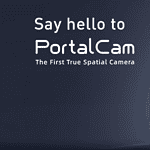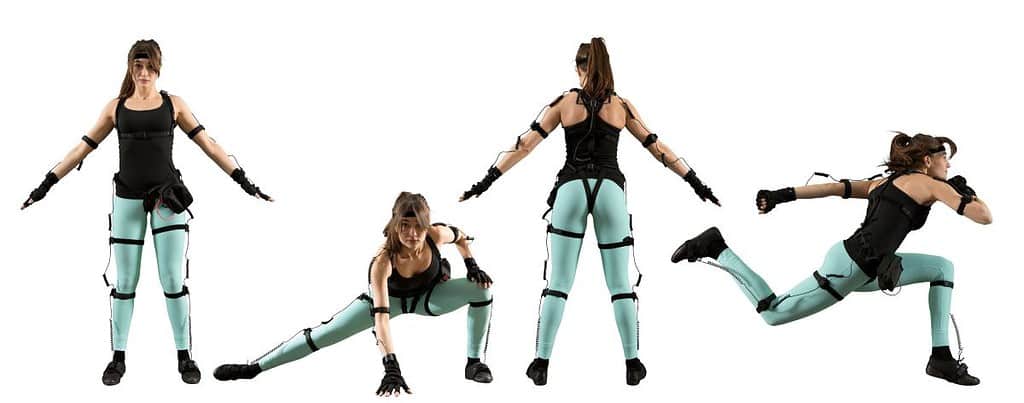






Advantages of Motion Capture:
Motion capture disadvantages:
Preparation: The actors or objects are equipped with the necessary markers or sensors.
Recording: The movements are recorded with special cameras or sensors.
Data processingThe recorded motion data is then converted into a digital format that can be used in software such as Maya, 3dsmax or Blender. Most of the time it is still necessary to remove errors and inaccuracies that occurred during the capture process. This process can be quite lengthy depending on the quality of the source data. This process is called "cleaning". Once the data has been cleaned, it can be loaded onto a 3D charkter model in the selected 3D animation software.
The cost of motion capture can vary depending on the quality and complexity of the system required. Entry-level systems such as Rokoko and Perception Neuron can be available for around 3000 euros, while professional systems can cost six-figure sums.
The quality of low-priced systems is constantly improving, so that impressive results are possible even with a 3000 Euro system.
AI motion capture portals such as Radical which generate mocap data from videos.
| Technology | Example systems | Advantages | Disadvantages | Costs |
|---|---|---|---|---|
| Optical tracking (with markers) | Vicon, OptiTrack, Qualisys |
- Very high precision - Ideal for complex movements - Industry standard in film |
- Very high costs for equipment and software - Complex calibration - Limited space for movement |
50.000 - 250.000 € |
| Markerless tracking | Move.AI, Captury, iPi Soft |
- Flexible use - Fast assembly - No special clothing required |
- Lower accuracy for complex movements - Lighting conditions influence tracking |
5.000 - 50.000 € |
| Inertial tracking (IMUs) | Rokoko Smartsuit Pro, Xsens, Perception Neuron |
- Mobile use - No cameras necessary - Real-time data processing |
- Position changes are usually calculated using software, which can lead to unrealistic movements when walking and running - Difficulties with jumps and lying movements - Drift error during prolonged use |
2.000 - 30.000 € |
| AI-supported tracking | RADiCAL Motion, DeepMotion, Kinetix |
- Cost-effective - No additional hardware required - Easy access |
- Limited accuracy - Dependent on software and computing power - Less control over details |
Free of charge - € 2,000 (subscription models) |
The idea of motion capture dates back to the 1920s, when the technology was first used in the film industry. However, motion capture was very limited at the time and could only capture simple movements. In the 1970s, the first marker-based motion capture systems were developed, which made it possible to capture motion more accurately. Today, there are several types of motion capture systems, including optical, magnetic, and inertial.
In addition to capturing body movements, a character's facial expressions and gestures are also very important. Facial Motion Capture focuses specifically on recording and transmitting facial movements. Either marker-based or markerless methods are used to capture the smallest facial expressions and facial expressions. A notable example of the power of face-capturing is the portrayal of Gollum in the "Lord of the Rings" film trilogy. The character's subtle facial features and emotions were rendered realistically and believably, made possible in significant part by face-capturing technology. Actor Andy Serkis, who portrayed Gollum, provided not only the voice and physical movements for the character, but also the facial movements. However, there are also increasingly affordable face capture solutions, most of which only use an iPhone to record facial movements. For example, iClone, Rococo and Unreal Engine's Metahuman Animator. So facecapture has become a real option even for small studios to create more vivid 3d characters.
A successful motion capture session requires careful planning and preparation, as well as clear communication with the actors or animals. It is important that actors wear comfortable clothing and do not wear accessories that could interfere with motion capture. The motion capture session should also take place in a well-lit room for best results. Perform calibration and test runs before starting the actual capture. Check the functionality of the equipment and ensure that motion is captured and transmitted correctly.
There are many motion capture software and tools on the market. Some of the most popular are Autodesk MotionBuilder, Rococo, Iclone, Vicon, OptiTrack and Xsens. These software and tools offer a wide range of functions to create precise animations and visual effects.
There have been many successful motion capture content created, in various industries. The film industry uses motion capture to create realistic animations of animals and monsters. It is also used in video game development to create realistic animations of characters and movements of athletes. In advertising, motion capture has been used to bring products to life.
We from Design4real use motion capture in various projects, such as the VR Diversity Workshop Moment times, or also the WebAR Halder Hammer Showcasewhere we used technology to give the 3D characters lifelike animations.
Motion capture is a rapidly evolving technology that is expanding to more and more industries. In the future, the technology will become more powerful and capable of creating even more realistic animations and visual effects. We believe that artificial intelligence will revolutionize this technology and that in the future, special hardware for mocap recording will hardly be brewed. Move.Ai already shows how powerful and simple artificial intelligence mocap solutions can be. In the future, we will probably be able to record motion capture at a high level simply using a mobile phone. The conversion into motion data will be handled in the cloud with the help of artificial intelligence.
Motion capture technology has changed the way we create animations of 3D characters. By capturing motion, realistic animations can be created with manageable effort. The XR Agency Design4real is the right partner for appealing character animations with motion capture and face capture.
Motion capture (MoCap for short) is a technology for capturing the movements of real objects or people. This motion data is used to realistically animate digital characters in film, gaming or virtual reality.
There are four main types of motion capture:
In this method, actors wear special suits with reflective markers. High-precision cameras record the positions of the markers in order to digitize movements in real time.
Mobile Mocap systems do not require cameras, are mobile and work in almost any environment. They are particularly suitable for smaller studios or outdoor shoots and can significantly reduce the cost of realistic character animations.
Motion capture is used in many areas, including:
Prices vary depending on the technology:
While Motion Capture only captures movements of the body, the Performance Capture The new software also allows the recording of facial expressions and speech to enable even more realistic animations.
Yes, many systems offer real-time tracking, where movements are immediately implemented in the software. This is particularly advantageous for live events or virtual reality applications. You should check the website of the respective hardware provider.
Basic knowledge of 3D animation and software operation is required. In order to achieve the best possible results, experience with the respective solution is also required. Do not expect professional results at the first attempt.






Are you interested in motion capture technologies? You may still have questions about budget and implementation. Please feel free to contact me.
I am looking forward to you
Clarence Dadson CEO Design4real